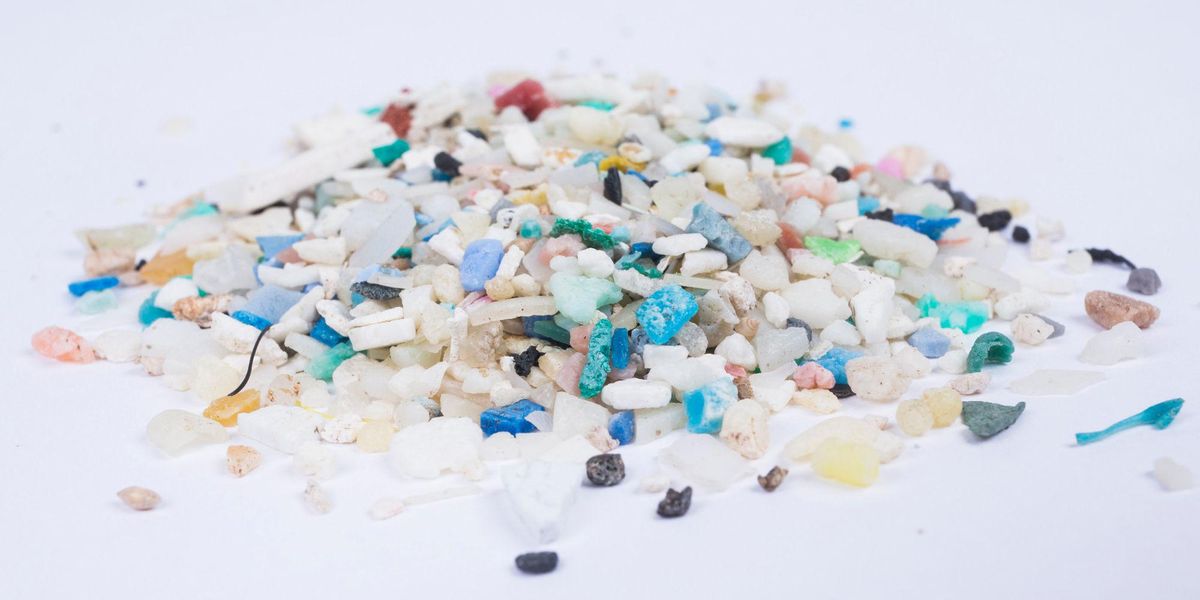Researchers find pollutants can hitch a ride on microplastics and harm human cells.
Krystal
Vasquez for Environmental Health News
Microplastics can pick up pollution in their travels and pose an even greater threat to human health, according to a new study.
In
the ocean, for example, toxic compounds can hitch a ride on plastic and make
the material 10 times more toxic than it would normally be, according to the
research published earlier this year in Chemosphere.
Although
the dangers of both microplastics and harmful compounds have been studied
individually, few researchers have look at their combined effect. This study is
also unique in that the researchers tested these polluted plastic particles on
human cells—most previous research has focused on the impacts on marine life.
Microplastics
are tiny plastic particles formed when larger pieces of plastic degrade over
time—and they are ubiquitous, found everywhere from Mount Everest to
the Mariana Trench. They can
act as magnets for environmental pollution, transforming them into potentially
toxic particles, Andrey Rubin, a Ph.D. Student at Tel Aviv University and first
author of the study, told EHN.
Previous
research has found they can accumulate an array of harmful chemicals,
including heavy metals, polychlorobiphenyls (PCBs)
and perfluoroalkyl substances (PFAS).
The microplastics can then funnel these compounds into the bodies of marine organisms, which studies have shown can lead to neurotoxicity, an altered immune response, a reduced growth rate, and death. From there, the tainted microplastics can continue to make their way up the food chain, inadvertently exposing humans.
Rubin
and co-author Ines Zuker, a professor of Mechanical Engineering at Tel Aviv
University, tested what would happen when human cells found along the
intestinal tract were exposed to a pollution-plastic mixture containing one type
of microplastic known as microbeads and triclosan, an antimicrobial ingredient
that was banned in the U.S. in
2016, primarily due to health concerns.
Triclosan,
formerly found in mouthwash and hand sanitizer, is an endocrine disruptor that
has also been linked to an increase in allergies in children. Even so, “it
still exists in some products,” explained Rubin. “A year ago, we saw triclosan
in a toothpaste, which is sold here in Israel.”
Rubin
and Zucker found that, alone, the microbeads weren’t toxic to human cells.
Neither was triclosan.
When
combined, however, the two were “very toxic toward the cells,” said Rubin—the
effect was an order of magnitude greater than the sum of its parts.
Outside
the lab, the cells the researchers used in their investigation are the same
ones that act as a barrier between the inside and outside of the body. The
plastic mixture “can get into our bloodstream,” explained Rubin, where the
accumulated compounds will likely be released.
Next,
they hope to investigate how the mixture’s toxicity changes when different
plastics or pollutants are used.
Controlled
environments in a laboratory make it difficult to say how applicable these
findings are in the real world, Tan Amelia, a Ph.D. student at University of
Malaysia, Terengganu who was not involved with the study, told EHN. Conditions
in the lab don’t perfectly represent environment, and findings from
microplastics research is often hard to replicate due to a lack of standardized
methods.
But
Amelia said the study should spur more awareness of a global problem.
“Papers
like those of Rubin and co-workers’ could help spread awareness regarding the
severity of microplastics, which indirectly encourages the reduction of
microplastics manufacturing and consumption,” she said.
